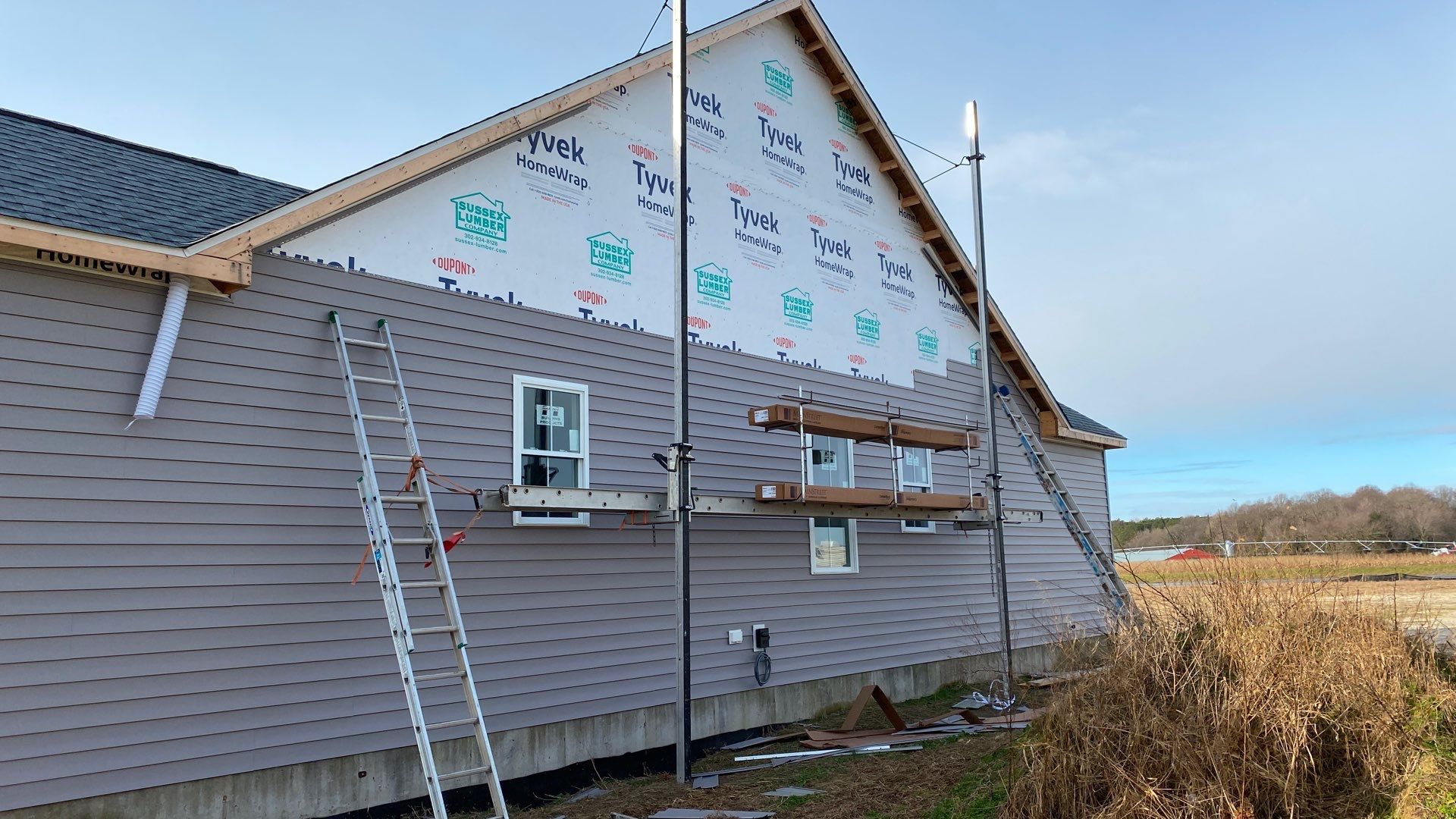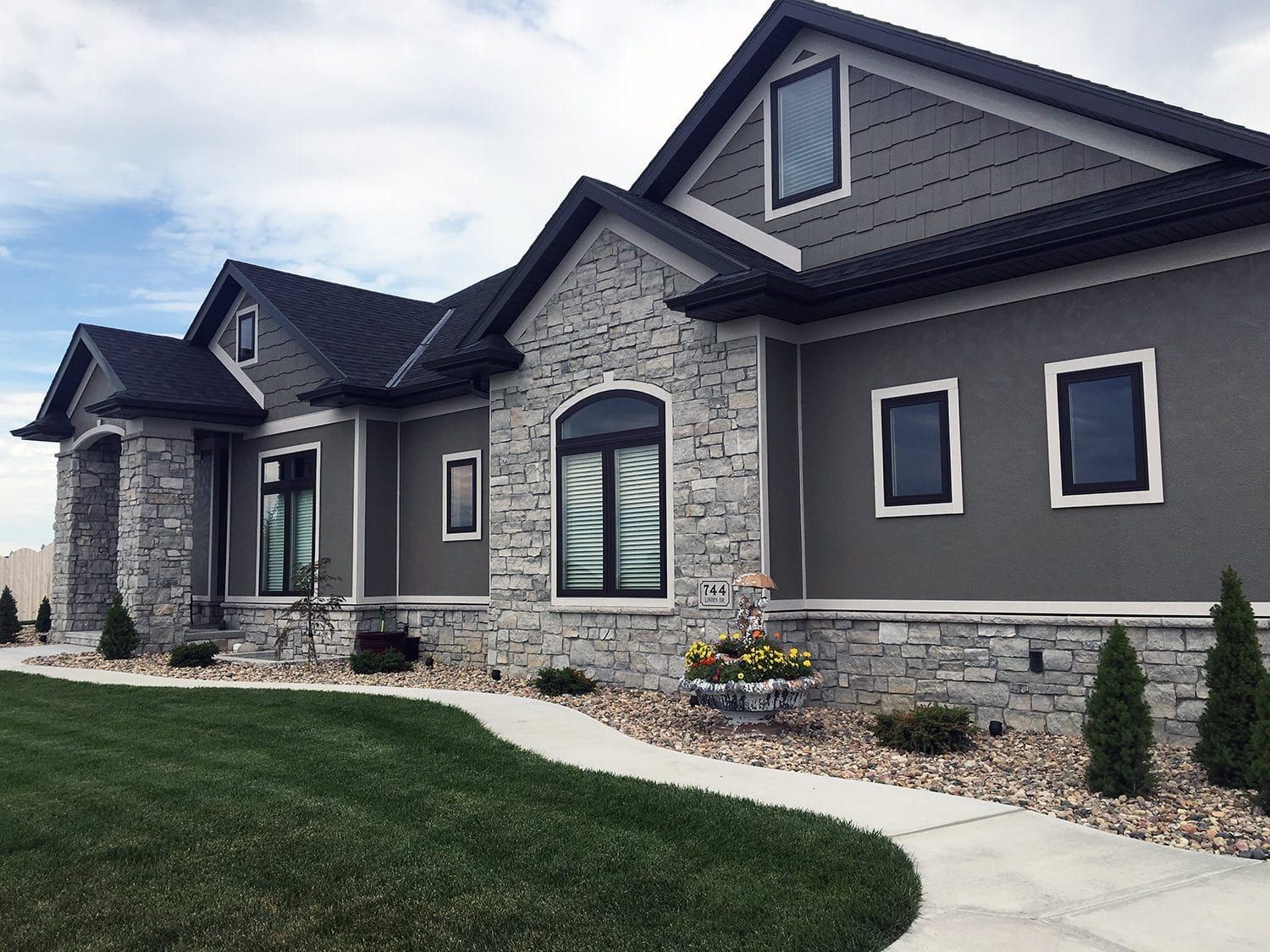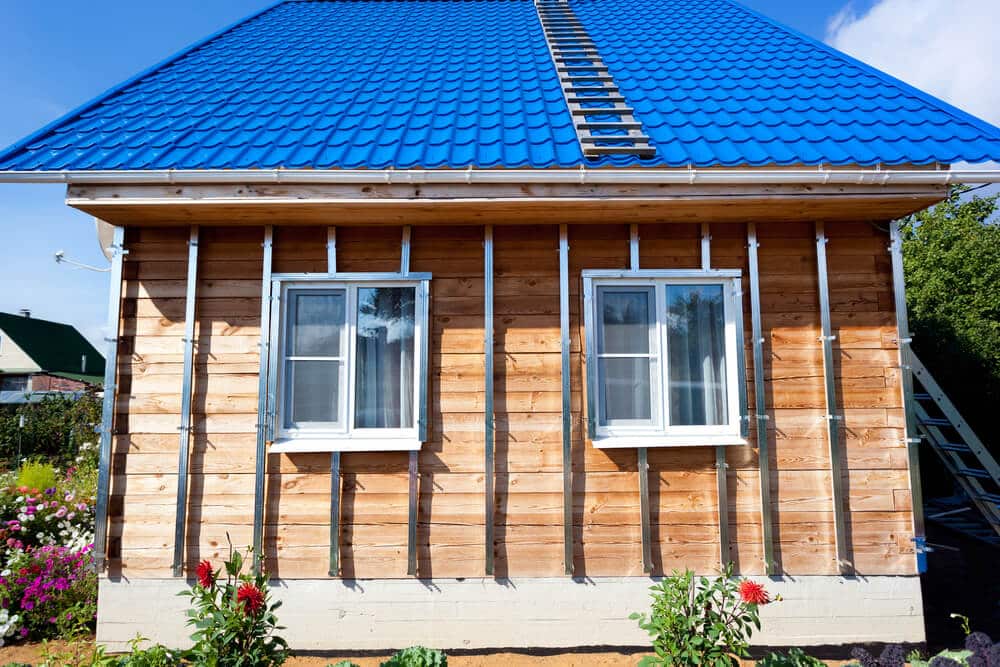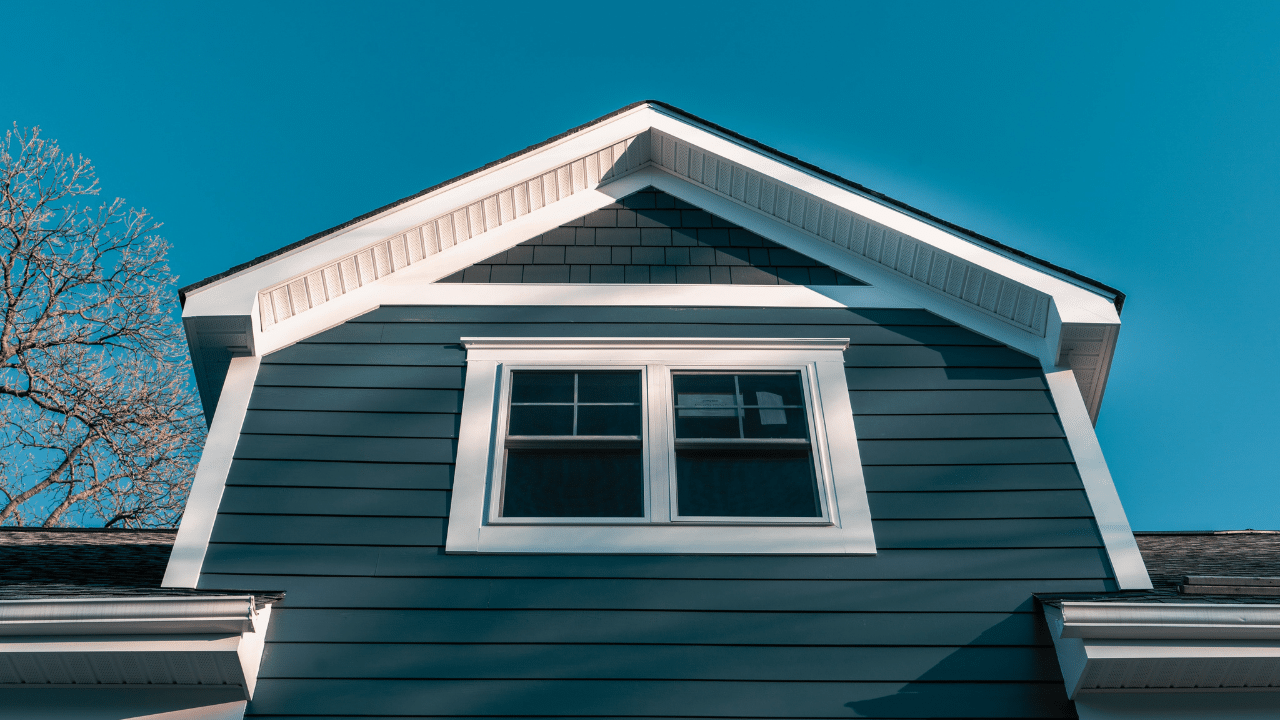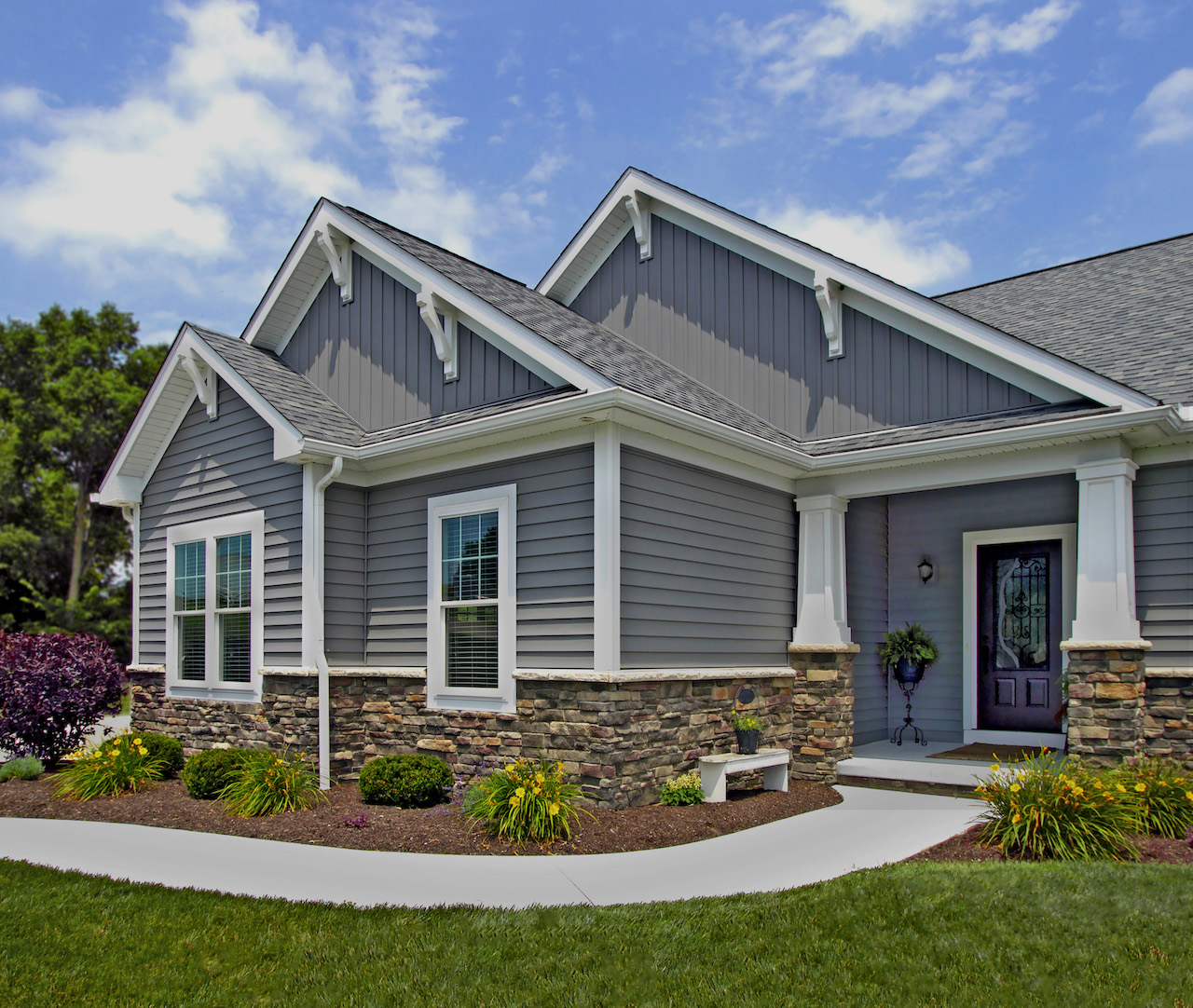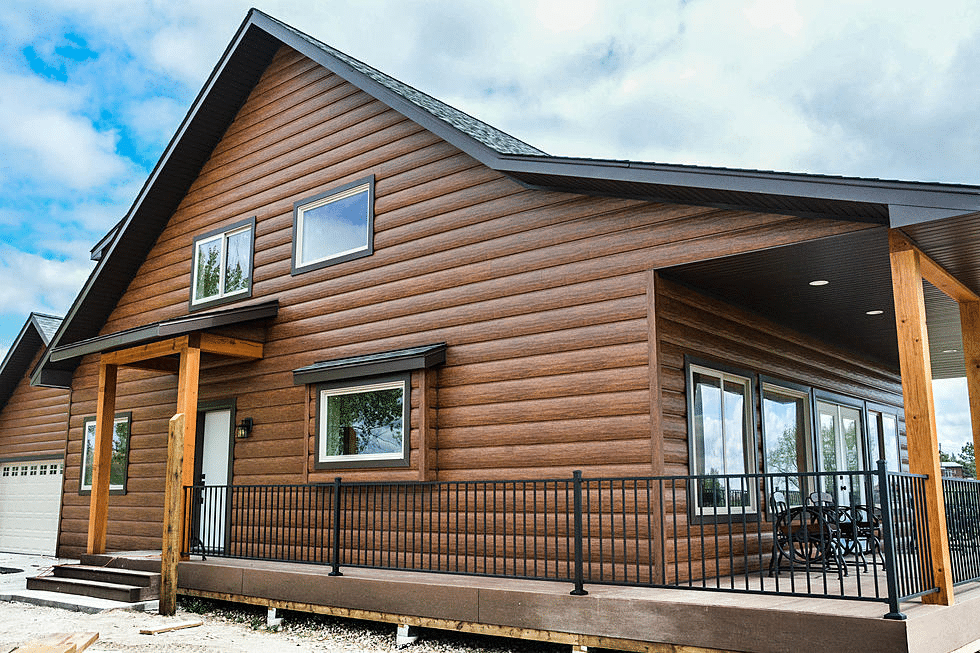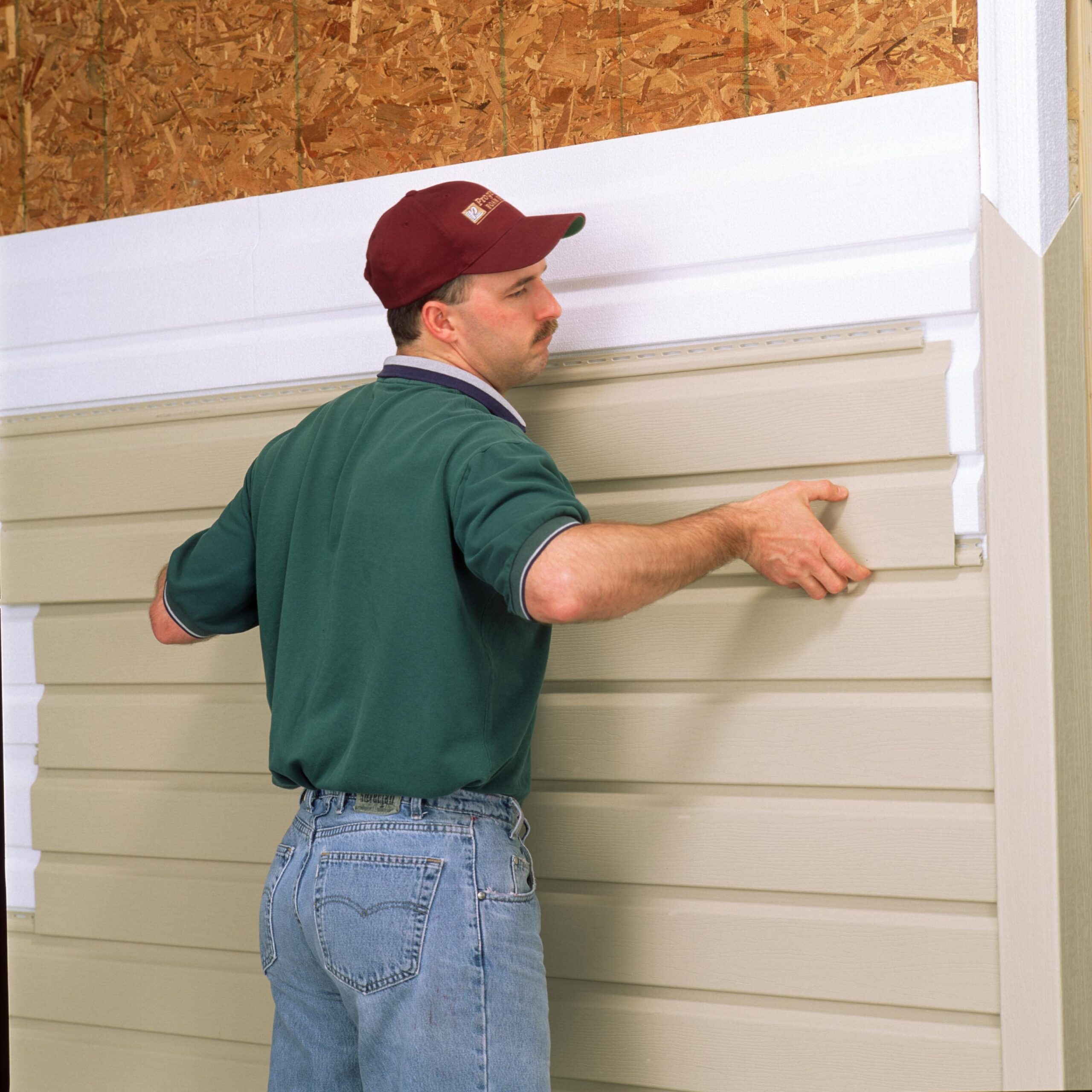Insulated Siding for Noise Reduction
Insulated siding for noise reduction offers a practical and often elegant solution to unwanted noise. This isn’t just about quieter homes; it’s about creating more peaceful and comfortable living spaces, improving sleep quality, and even boosting property values. We’ll explore the various types of insulated siding, their effectiveness, installation, and long-term benefits, helping you determine if this is the right solution for your noise reduction needs.
From understanding the different materials available – vinyl, fiber cement, foam core, and more – to weighing the factors that impact noise reduction beyond just the siding itself (like window quality and wall insulation), we’ll cover everything you need to know to make an informed decision. We’ll also look at cost-effectiveness, maintenance, and real-world examples to paint a complete picture of how insulated siding can transform your environment.
Types of Insulated Siding for Noise Reduction
Choosing the right insulated siding can significantly impact your home’s soundproofing. Different materials offer varying levels of noise reduction, influencing both the effectiveness of sound insulation and the overall cost of the project. Understanding these differences is crucial for making an informed decision.
Insulated Siding Materials and Their Soundproofing Capabilities
Several materials are commonly used in insulated siding designed to minimize noise transmission. Each material possesses unique acoustic properties and installation requirements that affect its overall sound dampening performance. These properties are often quantified using the R-value (thermal resistance) and the Noise Reduction Coefficient (NRC). A higher R-value indicates better thermal insulation, which can indirectly contribute to sound insulation, while a higher NRC indicates better sound absorption.
| Material | R-value (Approximate) | Noise Reduction Coefficient (NRC) (Approximate) | Cost (Approximate) |
|---|---|---|---|
| Vinyl Siding with Foam Backing | 4-7 | 0.1-0.2 | $4-$8 per square foot |
| Fiber Cement Siding with Foam Core | 6-10 | 0.2-0.3 | $8-$15 per square foot |
| Polyurethane Foam Siding | 6-12 (depending on thickness) | 0.3-0.4 | $10-$20 per square foot |
| Insulated Metal Siding | Variable, depends on insulation type and thickness | 0.1-0.3 (depending on panel type and construction) | $12-$25 per square foot |
*Note: R-values and NRCs are approximate and can vary based on specific product specifications and installation techniques. Costs are also estimates and can fluctuate based on location, labor costs, and material availability.*
Insulated Siding Installation and Sound Insulation
The installation method significantly influences the effectiveness of any insulated siding in reducing noise. Proper installation ensures a tight seal, minimizing gaps that could allow sound to penetrate. For example, with vinyl siding, ensuring proper overlap and sealing around windows and doors is crucial. Improper installation of any type of siding can lead to air leaks and reduced noise reduction. Fiber cement siding, known for its durability, requires precise cutting and fitting to maintain a consistent barrier against sound transmission. Foam core siding, due to its inherent insulating properties, often requires less attention to sealing gaps, but proper fastening is still critical for a sound-resistant installation. Finally, metal siding, frequently used in commercial settings, often necessitates specialized tools and expertise to ensure a tight and effective sound barrier. In all cases, professional installation is highly recommended to maximize the noise-reduction benefits of insulated siding.
Factors Affecting Noise Reduction with Insulated Siding
Insulated siding plays a crucial role in reducing noise transmission into a building, but its effectiveness depends on several interacting factors. Understanding these factors allows for informed decisions when choosing and installing siding for optimal noise reduction. While the siding itself is important, it’s part of a larger system working together to dampen sound.
Siding Thickness and Noise Reduction
The thickness of the insulated siding directly impacts its sound-dampening capabilities. Thicker siding provides more mass, which effectively absorbs and blocks sound waves. A thicker layer of insulation within the siding further enhances this effect by absorbing sound energy. For example, a 1-inch thick insulated vinyl siding will generally offer less noise reduction than a 2-inch thick insulated fiber cement board siding. The denser the material and the greater the thickness, the better the sound insulation. This is because sound waves have more difficulty penetrating a thicker, denser barrier.
Other Factors Contributing to Overall Noise Reduction
Effective noise reduction in a building is a holistic effort, relying on more than just the siding. Other significant factors include the type of windows installed, the amount and type of insulation in the walls and roof, and the overall airtightness of the building envelope. High-performance windows with multiple panes of glass and gas fills significantly reduce sound transmission. Similarly, sufficient insulation in walls and roofs helps absorb sound energy before it reaches the interior spaces. Air leaks around windows, doors, and other openings can negate the benefits of even the best siding, allowing sound to bypass the insulated barrier.
Air Gaps and Sealing Techniques
Air gaps within the siding system, while sometimes beneficial for ventilation, can compromise noise reduction. Unsealed gaps provide pathways for sound to travel directly into the building. Proper sealing techniques are therefore critical. This includes using appropriate sealants around windows and doors, ensuring tight connections between siding panels, and filling any gaps or cracks in the structure. A well-sealed building envelope minimizes sound transmission through air gaps, maximizing the effectiveness of the insulated siding. Imagine a poorly sealed window frame: even with thick, insulated siding, sound will easily penetrate through that weak point. Conversely, a meticulously sealed building, even with moderately thick siding, will offer much better noise reduction.
Insulated Siding and Building Codes/Regulations
Building codes and regulations play a crucial role in ensuring the safety, structural integrity, and energy efficiency of buildings. These codes often include provisions related to sound insulation, particularly in areas with strict noise control requirements, like those near busy roads or airports. Compliance with these regulations is essential for obtaining building permits and ensuring the legal construction of a building.
Insulated siding contributes significantly to meeting these standards by providing an effective barrier against noise transmission. Its inherent properties, combining insulation and a robust exterior layer, enhance the overall sound dampening capabilities of the exterior wall assembly. This reduces the amount of external noise that penetrates the building, improving the interior acoustic environment.
Building Code Examples Regarding Sound Insulation
Many local building codes adopt or reference national standards like the International Building Code (IBC) and International Energy Conservation Code (IECC). These codes often specify minimum sound transmission class (STC) ratings for exterior walls in certain zones or building types. For instance, a code might require an STC rating of 45 or higher for walls adjacent to busy streets. Specific requirements vary significantly depending on location, zoning regulations, and the type of building. The IBC might specify requirements for wall assemblies, while local codes could incorporate additional restrictions based on local noise levels. Furthermore, some jurisdictions may have supplemental ordinances addressing noise pollution directly, influencing the sound insulation requirements for building projects.
Insulated Siding’s Role in Meeting Sound Insulation Standards
The contribution of insulated siding to meeting sound insulation standards stems from its multi-layered construction. The outer layer provides weather protection and durability, while the insulation core significantly reduces sound transmission. The higher the R-value (a measure of thermal resistance) of the insulation, the better its potential for sound dampening. By incorporating insulated siding into the exterior wall system, builders can effectively increase the overall STC rating of the wall, helping to achieve compliance with local building codes and enhance the building’s soundproofing characteristics. For example, using insulated vinyl siding with a high-density foam core can significantly boost a wall’s STC rating compared to using traditional non-insulated siding. This increase in STC rating directly contributes to meeting or exceeding the sound insulation requirements outlined in the relevant building codes.
Certifications and Ratings for Soundproofing Properties
While there isn’t a universally standardized certification specifically for the soundproofing properties of insulated siding, manufacturers often provide sound transmission class (STC) ratings based on testing conducted according to ASTM standards. These ratings indicate the level of sound reduction provided by the siding material. However, it’s crucial to understand that the overall STC rating of a wall assembly depends on the entire construction, including the framing, sheathing, and other components. The siding’s contribution is part of the overall system performance. Therefore, while manufacturers provide STC ratings for their products, it is advisable to consult with acoustical consultants to ensure the complete wall assembly meets the specific sound insulation requirements of the relevant building codes and achieves the desired acoustic performance.
Cost-Effectiveness and ROI of Insulated Siding for Noise Reduction
Investing in insulated siding for noise reduction is a significant decision, requiring careful consideration of both upfront costs and long-term benefits. While the initial investment might seem substantial, the potential for cost savings and improved quality of life makes it a worthwhile proposition for many homeowners. This section analyzes the cost-effectiveness and return on investment (ROI) associated with this home improvement.
The cost-effectiveness of insulated siding for noise reduction hinges on comparing its total cost (including material and installation) against the cost of alternative soundproofing methods and the long-term savings it generates. Factors like energy efficiency improvements, reduced maintenance needs, and enhanced property value all contribute to the overall ROI.
Cost Comparison of Noise Reduction Methods
A direct comparison of insulated siding against other soundproofing solutions helps illustrate its value. The following table provides a hypothetical cost comparison, keeping in mind that actual costs will vary depending on factors like location, material choices, and project complexity. These figures are estimates and should be considered as illustrative examples rather than precise values.
| Material | Installation Cost (Estimate) | Long-Term Savings (Estimate, 10 years) | ROI (Estimate, 10 years) |
|---|---|---|---|
| Insulated Vinyl Siding | $15,000 – $25,000 | $5,000 – $10,000 (Energy & Maintenance) + $2,000 – $5,000 (Increased Property Value) | 15% – 40% |
| Standard Vinyl Siding + Added Soundproofing | $12,000 – $20,000 + $5,000 – $10,000 (Soundproofing Materials & Labor) | $3,000 – $6,000 (Energy Savings) + $1,000 – $3,000 (Increased Property Value) | 10% – 25% |
| Interior Soundproofing (e.g., Drywall, Insulation) | $10,000 – $20,000 | $2,000 – $4,000 (Energy Savings, if applicable) | 10% – 20% |
Long-Term Energy Savings
Insulated siding significantly improves a home’s energy efficiency. By reducing heat transfer, it lowers heating and cooling costs. For example, a home in a region with significant temperature fluctuations might see a 15-20% reduction in energy bills annually. This translates into substantial savings over the lifespan of the siding, potentially offsetting a significant portion of the initial investment. A family saving $500 annually on energy bills over ten years accumulates $5000 in savings.
Return on Investment (ROI) Considerations
The ROI of insulated siding extends beyond simple energy savings. The improved noise reduction contributes to a more comfortable and peaceful living environment, a benefit difficult to quantify directly but undeniably valuable. Furthermore, homes with superior soundproofing and energy efficiency often command higher resale values, adding another layer to the overall return on investment. A 5% increase in property value on a $300,000 home represents a $15,000 increase, substantially boosting the ROI. The combination of energy savings, improved comfort, and increased property value makes insulated siding a potentially lucrative long-term investment.
Maintenance and Lifespan of Insulated Siding
Insulated siding, while offering excellent noise reduction and energy efficiency, requires regular maintenance to ensure its longevity and continued performance. Neglecting maintenance can lead to premature deterioration, compromising both its aesthetic appeal and its soundproofing capabilities. The specific maintenance needs vary depending on the type of siding material used.
Proper maintenance significantly impacts the lifespan and effectiveness of insulated siding as a sound barrier. Regular cleaning prevents the buildup of dirt and debris, which can trap moisture and lead to damage. Addressing minor repairs promptly prevents larger, more costly issues from developing. By following a consistent maintenance schedule, homeowners can extend the life of their siding and maintain its noise-reduction properties for many years.
Maintenance Requirements for Different Insulated Siding Types
Different insulated siding materials have varying maintenance needs. For instance, vinyl siding is relatively low-maintenance, requiring only occasional cleaning with soap and water. However, fiber cement siding may require more frequent cleaning and occasional repainting to maintain its appearance and protect it from the elements. Understanding these differences is crucial for effective maintenance.
Lifespan of Various Insulated Siding Materials
The lifespan of insulated siding varies considerably depending on the material, climate, and maintenance practices. Vinyl siding, known for its durability and low maintenance, typically lasts 20-30 years or more. Fiber cement siding, while more durable than vinyl, can also last 20-30 years, but its lifespan may be shorter in harsh climates. Wood siding, while aesthetically pleasing, requires more frequent maintenance and typically has a shorter lifespan, often needing replacement within 15-20 years. These lifespans are estimates, and proper maintenance can significantly extend them. A well-maintained vinyl siding installation in a mild climate could easily surpass 30 years of service.
Impact of Proper Maintenance on Longevity and Soundproofing
Regular cleaning prevents the accumulation of dirt and grime that can trap moisture, leading to rot, mildew, and other forms of damage. Prompt repair of minor damage, such as cracks or dents, prevents these issues from escalating and compromising the structural integrity of the siding. Moreover, maintaining a properly sealed and intact surface is crucial for effective soundproofing. Cracks or gaps in the siding can allow sound to penetrate, reducing the noise reduction capabilities of the insulation. A consistent maintenance program ensures the siding remains effective as a sound barrier over its entire lifespan. For example, a home with well-maintained fiber cement siding might consistently demonstrate a 10-decibel reduction in exterior noise over its entire 25-year lifespan, whereas a neglected installation might see that number decrease significantly due to deterioration.
Illustrative Examples of Insulated Siding in Noise-Reduction Applications
Insulated siding offers a practical and effective solution for reducing noise pollution in various building scenarios. The following examples highlight how different siding materials can be chosen to address specific noise challenges, resulting in a quieter and more comfortable living or working environment.
The selection of insulated siding depends on factors such as the type and intensity of noise, the building’s construction, and the desired level of noise reduction. Careful consideration of these factors ensures optimal performance and cost-effectiveness.
Urban Apartment Building Noise Reduction
This example focuses on a six-story apartment building located in a busy city center, experiencing significant noise from traffic, sirens, and construction. The primary noise sources are low-frequency sounds from heavy vehicles and high-frequency sounds from construction equipment and emergency vehicles. To mitigate these, a fiber cement insulated siding system was chosen. Fiber cement offers excellent sound absorption properties due to its density and composite structure. The added insulation layer further dampens sound transmission. The system was designed with staggered stud framing and sealed joints to minimize sound bridging. The result was a significant reduction in both low and high-frequency noise penetration, improving the quality of life for residents.
Suburban Home Near a Busy Highway
A two-story suburban home situated close to a major highway faced persistent noise intrusion from high-speed traffic. The constant hum of vehicles significantly impacted the occupants’ peace and quiet. In this case, vinyl insulated siding with a high density foam core was installed. Vinyl siding is relatively inexpensive and easy to install, while the dense foam core provides substantial sound insulation. The installation focused on meticulous sealing of all gaps and joints to prevent sound leakage. The high R-value of the foam core also provided additional energy efficiency benefits, reducing heating and cooling costs. The chosen system resulted in a noticeable reduction in highway noise, creating a more tranquil home environment.
Rural Farmhouse Near a Train Line
A historic farmhouse located near a frequently used train line experienced significant noise disruption from passing trains, particularly the low-frequency rumble of the engines. To preserve the building’s historical character while improving noise reduction, engineered wood insulated siding was selected. This material offers a balance between aesthetic appeal and sound-dampening capabilities. Its natural appearance complements the farmhouse’s style, while its layered construction, including a foam insulation core, effectively reduces the transmission of low-frequency sounds from the trains. Careful attention was paid to proper installation, including the use of resilient channels to further decouple the siding from the underlying structure. The result was a noticeable decrease in the train noise without compromising the building’s architectural integrity.
Ending Remarks
Ultimately, choosing insulated siding for noise reduction is an investment in comfort, peace of mind, and potentially, your property’s value. By carefully considering the factors discussed – material type, installation, maintenance, and long-term costs – you can select a solution that effectively addresses your noise concerns while enhancing the aesthetic appeal and energy efficiency of your building. Remember to consult with professionals to ensure proper installation and maximize the benefits of your chosen siding.


